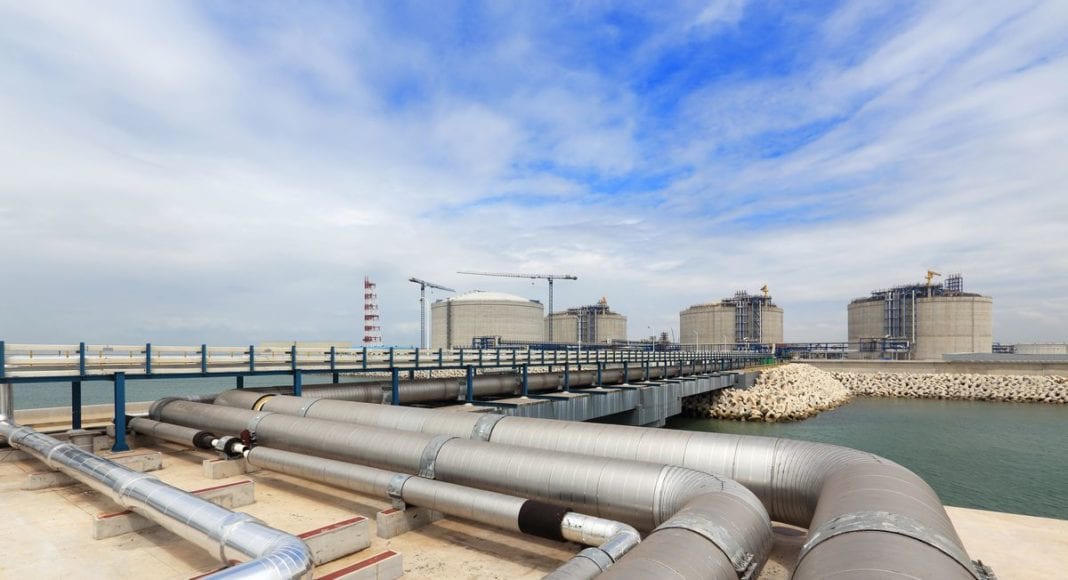The Covid-19 pandemic has landed a lasting blow to both oil and gas markets. Global oil production has absorbed the lion’s share of the impact, but natural gas output, which was previously set to grow, is also set to decline by 2.6% this year, Rystad Energy forecasts. Production of associated gas from oil fields will be hit most, losing some 5.5% compared to 2019 levels.
Before Covid-19 forced a new reality upon the energy world, Rystad Energy expected total natural gas production to rise to 4,233 billion cubic meters (Bcm) in 2020, from 4,069 Bcm last year. Now this estimate is revised down to 3,962 Bcm for this year, rising to 4,015 Bcm in 2021 and to 4,094 in 2022.
Production from natural gas fields, which was initially expected to rise to 3,687 Bcm this year from 3,521 Bcm in 2019, is expected to reach 3,445 Bcm instead, recovering to 3,485 Bcm in 2021 and further to 3,551 Bcm in 2022.
Rystad Energy said the most affected output in percentage terms is the one of associated gas, which was initially forecast to stay largely flat year-over-year from the 2019 level of 547 Bcm. It is now expected to fall to 517 Bcm instead in 2020, rising to 530 Bcm in 2021 and 542 Bcm in 2022. Associated gas will likely only again exceed 2019 levels from 2023 onwards.
“Part of the recovery will be driven by optimism in future oil prices, which could gradually drive output from associated gas fields to near 600 Bcm by 2025. But how future oil prices really evolve will actually define the total natural gas output,” says Rystad Energy’s Head of Gas and Power Markets Carlos Torres-Diaz.
The biggest drop in associated gas production will be felt in North America, which accounts for about half of the global output. From a level of 259 Bcm in 2019, associated gas output will fall to 246 Bcm in 2020 and remain flat in 2021. Only later will it start recovering, to 256 Bcm in 2022 and 269 Bcm in 2023.
The second-largest associated gas producing region, the Middle East, appears a bit more resilient. Output will fall from 95 Bcm in 2019 to 91 Bcm in 2020, quickly recovering to 94 Bcm in 2021 and 99 Bcm in 2022.
Russia will see its associated gas production falling from the 2019 level of 52 Bcm to 46 Bcm in 2020, recovering to 50 Bcm in 2021, just marginally declining in years after that.
Europe’s output, however, will keep its 2019’s 38 Bcm levels flat into 2020, seeing an increase to 39 Bcm in 2021 and 2022, before peaking at 40 Bcm in 2023.
Rystad Energy forecasts that oil Brent prices will stabilize at around $60 per barrel in 2025, leading to our base case associated gas production forecast of 596 Bcm in 2025. However, if prices were to remain at the current level of $40 per barrel, then there is a risk of seeing associated production drop below 500 Bcm. On the other hand, if Brent prices were to increase towards $120 per barrel, production from associated fields would see a fast recovery and have the potential to reach 800 Bcm by 2025.
While global gas demand for 2020 has been revised down to 3,883 Bcm due to the impact of Covid-19, a jump in consumption during 2021 as a result of continued low prices and recovering economic performance could lead to a tighter balance. Currently, the production forecast for 2021 is 4,015 Bcm, meaning that if demand grows more than 3%, the balance could tighten significantly. This would subsequently lead to higher prices, which could trigger a supply response.
Rystad Energy said its current price forecast for 2021 suggests Henry Hub prices will average $2.7 per MMBtu and TTF prices $3.6 per MMBtu. The upside risk for global gas prices has increased as investments for projects are delayed.



